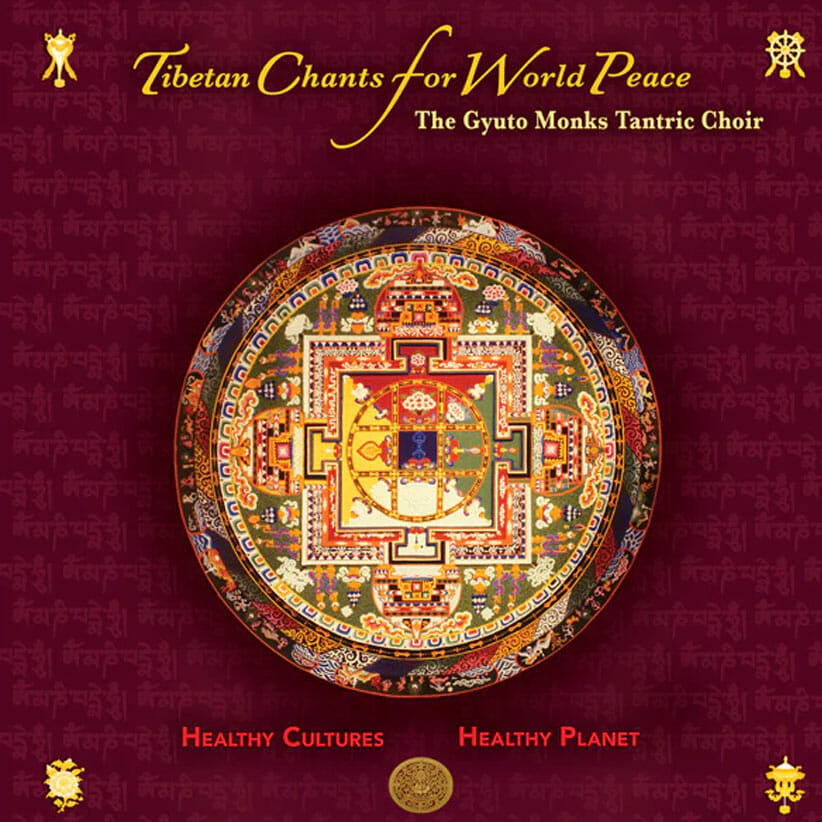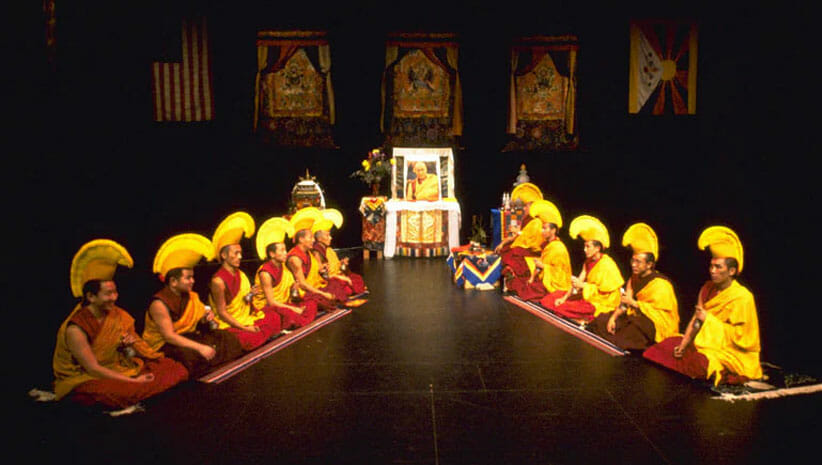Archaic Techniques of Ecstasy: Living with Tibetan Chants for World Peace
Mickey Hart, known for being the drummer extraordinaire in the long-lived and well-loved Grateful Dead, is passionate about world music. He’s toured with world musicians including Zakir Hussain in the Global Drum project (recently heard at UCLA and reviewed in LA YOGA) and has a more than twenty-year relationship recording and promoting the Gyuto Monks Tantric Choir. He recorded the album Tibetan Chants for World Peace.
Mickey Hart took some time in his studio to talk to LA YOGA about their latest recording, Tibetan Chants for World Peace.
LA YOGA: I heard someone gave you a recording of the Gyuto Monks 40 years ago?
Mickey Hart: That’s the story. Robert Hunter, the lyricist for the Grateful Dead, handed me an unmarked cassette. Huston Smith was the first Western ear to have heard these chants, in 1965, and he recorded them, analyzed them at MIT and realized these monks were singing a tri-tone, three notes simultaneously. No one had even imagined it, let alone recorded it. I was totally fascinated and enthralled by these otherworldly sounds.
It was explained to me that they were human voices trying to entrain with the seed sound, the force that created all of us. They were selflessly praying for all sentient beings, using the larynx in the most sacred of ways. For hundreds of years, it was behind monastery walls. This was the purest music on the planet and was coming from the human throat: three notes simultaneously.
Once I realized that, I met them in 1985, when Robert Thurman brought them in for the Buddhist Society in America, recorded them, had some social time with them and brought them out to Berkeley Community Theater where I presented them in concert. This was the first time they were amplified, able to be heard by 2,000 people instead of just sitting around in a circle.
What inspired you about these sounds?
It’s about sound; it’s also about Tibetan exile. In 1959, when the Chinese invaded, everything changed. I can support this marvelous sacred tradition outside of Tibet that’s about to be snuffed out. These guys were built for the sacred, not to do business, not to run dot.coms; they are guides to the other side. They pray for everyone with every breath they take. This is serious business.

What’s unique about this recording: Tibetan Chants for World Peace?
They’ve allowed me to overdub on them in the digital domain, which means I could create hundreds of voices, great choirs not heard outside of Lhasa. This is what it was when it ricocheted off the wall of the monastery. One monk chanting is quiet, low, like 70 cycles. It’s not like they’re singing. This is gymnastic, Olympian, very difficult to do. You need a place for it to resonate and they do that in their sacred space. It was a jaw-dropper; I think it’s the finest recording I’ve been part of.
That says a lot.
With the monks, it’s easy. It’s never take two.
They’re expressing their spiritual practice.
They empty their body and refill their vessel with these vibrations. They’re creating a virtual space and place outside of clock-time. These chants suspend time; music has always been a search for the land beyond time. You could think of it as mystical flight. Any symbol, sonic or visual, can be transformed through ritual into powerful spiritual material. Participation in the chants makes you part of the connectedness of everything. It’s like yoga, the serpent power. I stretch every day, there’s not a day that goes by that I don’t breathe into the stretch. These monks, that’s what they’re doing in their sonic world.
How many individual voices are there?
Ten creating this wall of sound. They’re creating a universe, a sound mandala, sound yoga, a virtual space filled with sounds, symbols and visuals. They chants are vibratory in nature; there’s hope in them. They give everyone a good life. They’re not just Buddhist. They chant for the Chinese. They chant for anything that’s alive, they’re totally selfless.
Do people benefit from listening to recordings, as well as seeing them in person?
Absolutely. You don’t have to know the Sanskrit texts. His Holiness says there’s innate power and healing energy in these tri-tones. These are archaic techniques of ecstasy. The monks are deep.
It’s not party music; you don’t boogie to the monks. I get into the rhythm and hear hundreds of voices in them. It’s never-ending. People are breathing, understanding that they have to find a center, have the balance, from the mula bandha, if you don’t’ have the chi, you don’t have anything. If you don’t have it, you can’t give it away. That’s my relationship to them. I mixed it in 5.1 as well; there’s a surround recording that will come out one day.
It sounds like you’ve done this as much for yourself as anyone.
Indeed I have. These chants light my life.
Tibetan Chants for World Peace
Royalties from the sale of Tibetan Chants for World Peace supports the Gyuto Tantric University. For more information, visit: White Swan Records release of Tibetan Chants for World Peace.
Felicia Tomasko has spent more of her life practicing Yoga and Ayurveda than not. She first became introduced to the teachings through the writings of the Transcendentalists, through meditation, and using asana to cross-train for her practice of cross-country running. Between beginning her commitment to Yoga and Ayurveda and today, she earned degrees in environmental biology and anthropology and nursing, and certifications in the practice and teaching of yoga, yoga therapy, and Ayurveda while working in fields including cognitive neuroscience and plant biochemistry. Her commitment to writing is at least as long as her commitment to yoga. Working on everything related to the written word from newspapers to magazines to websites to books, Felicia has been writing and editing professionally since college. In order to feel like a teenager again, Felicia has pulled out her running shoes for regular interval sessions throughout Southern California. Since the very first issue of LA YOGA, Felicia has been part of the team and the growth and development of the Bliss Network.

